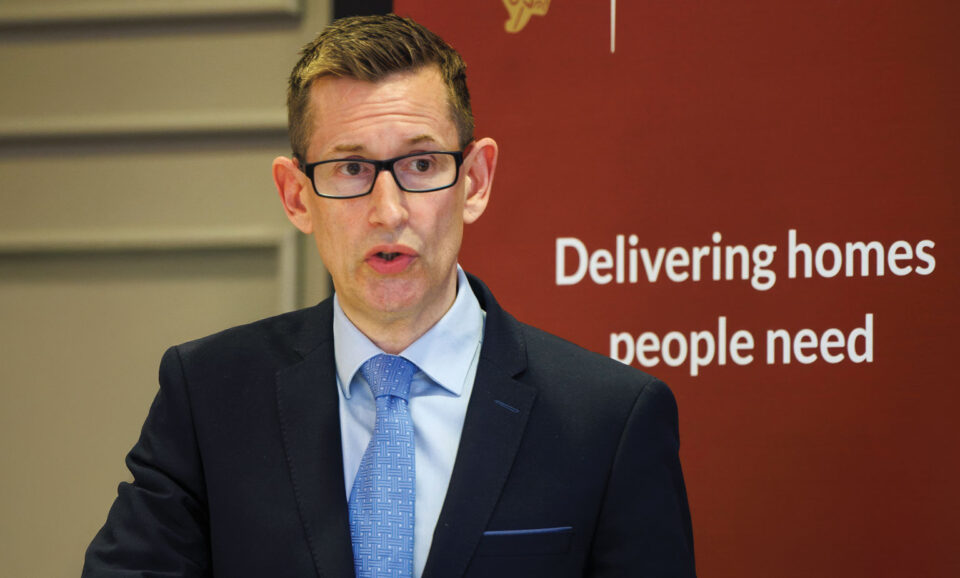
We need warmer, energy efficient, and connected homes
1st July 2025
Fingal’s approach to delivering homes and renewing communities
1st July 2025Learning from the Greater Manchester Social Housing Digital Inclusion Pilot

Nick Horne, Chief Executive of Wythenshawe Community Housing Group (WCHG), discusses the lessons learned from the Greater Manchester Social Housing Digital Inclusion Pilot.
Initiated in 2023 under the coordination of the Greater Manchester Combined Authority (GMCA) and participating housing providers, the pilot sought to explore the feasibility of scaling low-cost internet access across the social housing sector through voluntary collaboration with commercial providers.
The pilot was instigated following an invitation from the Mayor of Greater Manchester, Andy Burnham, with delivery coordinated across five housing associations and five telecoms providers.
WCHG manages 14,000 homes in south Manchester. Of these, approximately half are located in the 10 per cent most deprived areas of England. Horne outlines that digital poverty was significantly above average in these neighbourhoods. GM housing providers collectively own and manage 260,000 homes, which is around 20 per cent of all housing in the area. Internal analysis estimates that 55 per cent of residents across this stock experience some form of digital poverty, exceeding both regional and national benchmarks.
Digital poverty is defined using four key barriers identified by Ofcom: affordability, access, skills/ability, and motivation. The term refers to the unequal capacity to access and use digital technology in ways that facilitate full societal participation. Horne also references the definition produced by the Good Things Foundation as an appropriate framing tool for policy and service planning purposes.
The pilot involved five housing associations, each paired with one of five major internet service providers (ISPs). WCHG worked with Virgin Media O2. Each housing provider identified 1,000 residents who were likely to be digitally excluded, based on internal data and proxy indicators. Residents were offered low-cost broadband social tariffs (typically £10–15/month), without contract lock-in, alongside free mobile data SIMs where applicable.
The project was unfunded by central government, instead relying on in-kind and direct contributions from ISPs and housing associations. The University of Liverpool provided independent academic observation, and the programme was supported by the GMCA, the 10 Greater Manchester local authorities, VCSEs, and NHS bodies.
Findings
The pilot encountered several structural and operational challenges, which cumulatively limited uptake to approximately 5 per cent of the target households:
- Data deficiencies: Participating housing providers generally lacked accurate or sufficient data to reliably identify digital exclusion among residents. Initial segmentation was based on proxy measures, such as the presence or absence of email addresses, which proved inadequate.
- Unclear definitions: Providers lacked a shared or operationalised definition of what constitutes “digitally included”. Many tenants used smartphones for communication or entertainment but were unable to transact with public services online (e.g., Universal Credit applications, NHS appointments).
- Transformation programme disconnect: Digital inclusion was not embedded within the broader digital transformation programmes being undertaken by most of the housing organisations. For example, the WCHG digital channel shift programme did not until recently appropriately reflect resident capacity to use digital channels, thereby risking increasing digital inequalities.
- Low motivation among residents: The most significant barrier to uptake was found to be motivational. Many residents reported they did not perceive a need for broadband access. The pilot indicated that demand stimulation must be considered a prerequisite for intervention design.
- Internal fragmentation: Within housing associations, relevant internal teams (e.g., tenancy support, asset management, data, customer insight, communications) too operated in silos when considering digital inclusion programmes. Digital inclusion was not always a cross-cutting strategic priority.
- Infrastructure constraints: Physical barriers (e.g., property access, installation issues, planning rules) impacted delivery feasibility, particularly in tower blocks. Engagement from asset management teams was identified as essential. The programme partners developed a standardised Wayleave Agreement as one positive solution to this issue
Recommendations
In response to the above findings, WCHG and partner organisations developed a 12-point implementation programme for digital inclusion. The key components are:
- Improve resident data: Build accurate digital capability profiles across the resident base using direct engagement and structured datasets.
- Operational definition: Develop and adopt a working definition of digital inclusion with measurable competencies.
- Integrate with digital transformation: Ensure resident-facing digital inclusion is embedded in internal service change processes.
- Address motivation: Design interventions that focus on positive incentives and demonstrated value to residents.
- Enhance internal coordination: Establish cross-functional working groups to deliver integrated approaches.
- Link to existing programme spend: Align digital inclusion activities with funding and interventions in health, welfare, and education.
- Partnership development: Sustain partnerships with telcos, local authorities, health services, and charities.
- Test alternative delivery models: Explore options such as community-wide Wi-Fi infrastructure, including mesh networks (as trialled in Rochdale).
- Secure funding: Frame digital inclusion as a long-term invest-to-save opportunity and ensure executive sponsorship.
- Retain printed communications: Maintain traditional communications channels to avoid exacerbating exclusion.
- Promote social tariffs: Continue promoting discounted broadband offers, while recognising their limitations.
- Support capability development: Provide accessible digital access points (e.g., libraries, GP surgeries, community centres) and wraparound support.
“Digital access has to be framed as a core infrastructure requirement, not an optional add-on. ”
National policy developments
The UK Government’s Department for Science, Innovation and Technology (DSIT) published the Digital Inclusion Action Plan: First Steps in May 2025. Horne identifies this as the most coherent strategic statement from central government to date and encouraged housing providers to align future local programmes with its principles.
Concluding, he says: “What the pilot demonstrates is that digital inclusion cannot be treated as a standalone issue. It is structurally embedded in how we deliver services, communicate with residents, and design housing programmes. The barriers we encountered – from poor internal data to low resident motivation – are not isolated problems. They reflect wider operational assumptions about resident capability and service readiness.
“Going forward, digital access has to be framed as a core infrastructure requirement, not an optional add-on. That means integrated planning, sustained funding, and a cross-sector approach that recognises digital inclusion as essential to tenancy sustainment, health outcomes, and access to public services.”






